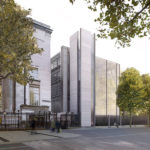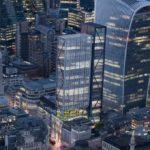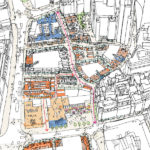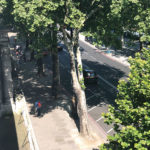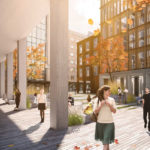With ground floor space at a premium and car free developments in central London becoming more popular, finding space for delivery vehicles can be a challenge. The value of public realm at this level is also increasingly important as part of attracting and retaining pedestrian activity in the city.
A solution in urban centres over the past decade has been to use conventional vehicle lifts to access basement level servicing areas. The downside to these is that they can take up valuable building frontage, restrict pedestrian movements and reduce usable space on the ground floor.
In our recent projects Momentum has been able to challenge this approach by proposing multi-use servicing vehicle lifts, aligning with overnight servicing strategies and the 24-hour city idea that also include proposals for the consolidation of the goods on the vehicles to help reduce the number of vehicles. Drawing inspiration from our work on the British Museum, and using these ideas, we have been able to unlock the potential for pop-up retail, an area for social gatherings or other amenities during the daytime and then as a functional servicing arrangement overnight.
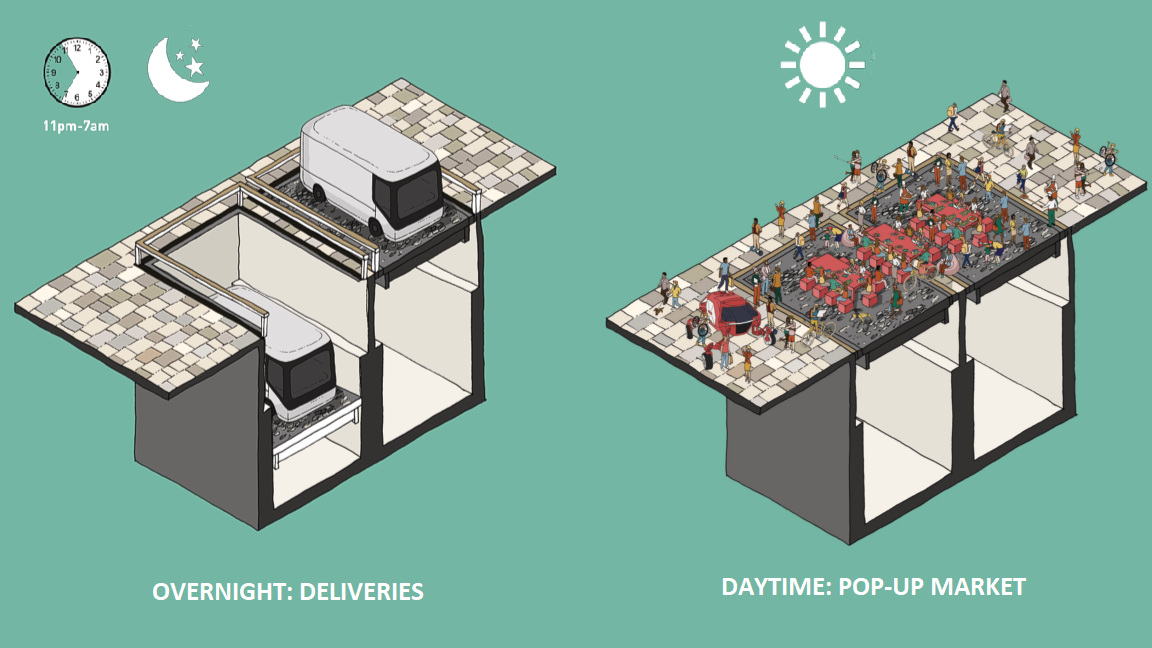
This off-street servicing strategy is different to many standard designs as it avoids the need of a ramp which results in a loss of space at both the ground floor and basement level. A typical solution to avoid ramps has been dedicated vehicle lifts, however both of these result in a permanent loss of building frontage and a loss of permeability for people to access the building and reduce the usable ground floor footprint.
This innovative multi-purpose vehicle lift that Momentum has been proposing allows servicing to happen out of hours overnight, and during the daytime the lift-lid forms part of the public realm – blending in with the rest of the area and allowing people to walk over the lifts. This can provide a flexible space for cultural activities and pop-up markets. When the lifts are in use, the lid of the lifts raises up, to allow a vehicle to drive into the lift, before lowering the vehicle into the basement.
This type of lift has been used internationally and typically been used by museums and for art exhibitions due to the minimal vibrations. For example, in Seoul, South Korea and the Maxim Gorki Theatre in Berlin, Germany. These however tend to be used outside of the building and not integrated into the building’s design.
With urban design and cities under the microscope on how to best utilise space, this solution also ties in with Carlos Moreno’s idea of the 15-minute city where “each square metre should serve many different purposes.” This design innovation enables permeability within developments and allows developers and architects freedom to be more creative and not only improve the feel of a building, but also its efficiency.
Multi-use vehicle lifts are part of three developments that Momentum has supported through to planning approval at 70 Gracechurch Street; 55 Gracechurch Street and 85 Gracechurch Street. The City of London planning and transportation committee for the 55 Gracechurch Street application described it as “a real innovation for the City. An exciting concept…and a groundbreaking concept.” and at 70 Gracechurch Street the committee said of the strategy “…a real game changer in the way large city buildings are serviced and it’s a move away from the barren and large servicing bays which seem to blight a lot of our streets.”
We’re now seeing a rise in planning applications adopting similar approaches to servicing and look forward to working with clients to introduce new ideas that use spaces more effectively, move us towards our sustainability goals and create new places for people.
Image credit Fletcher Priest Architects
